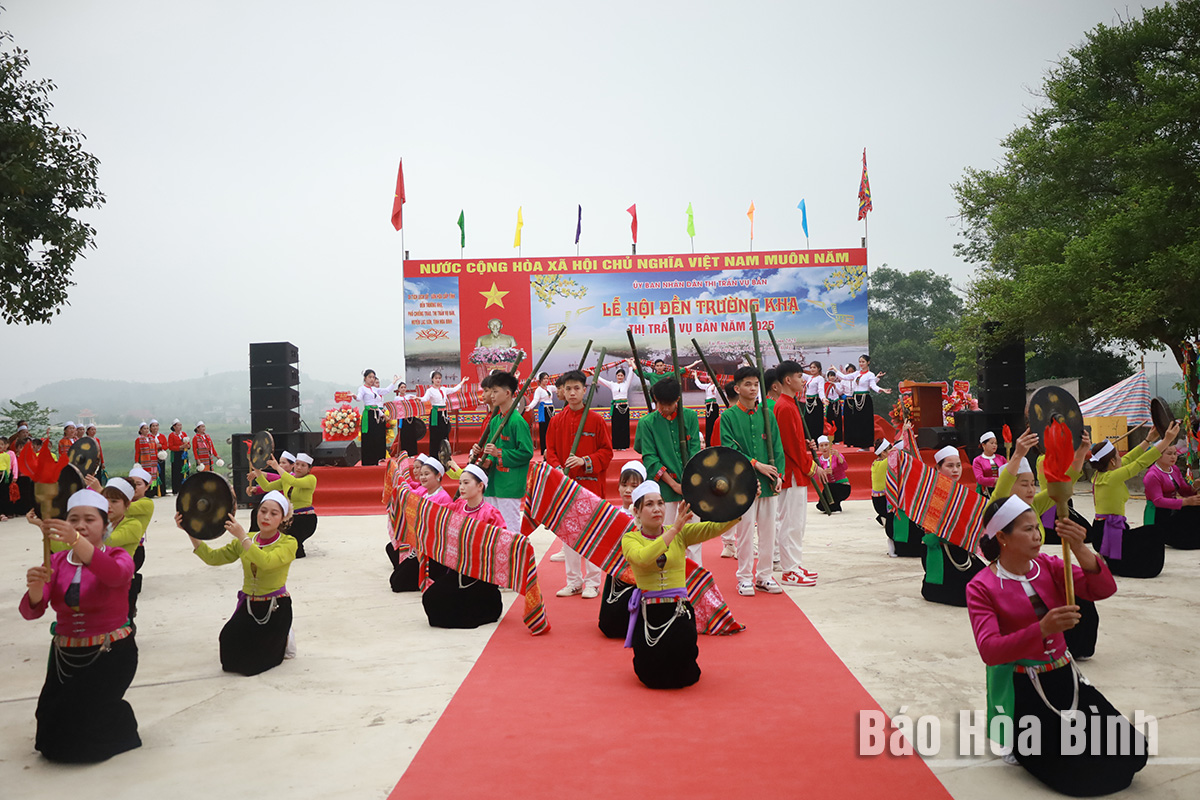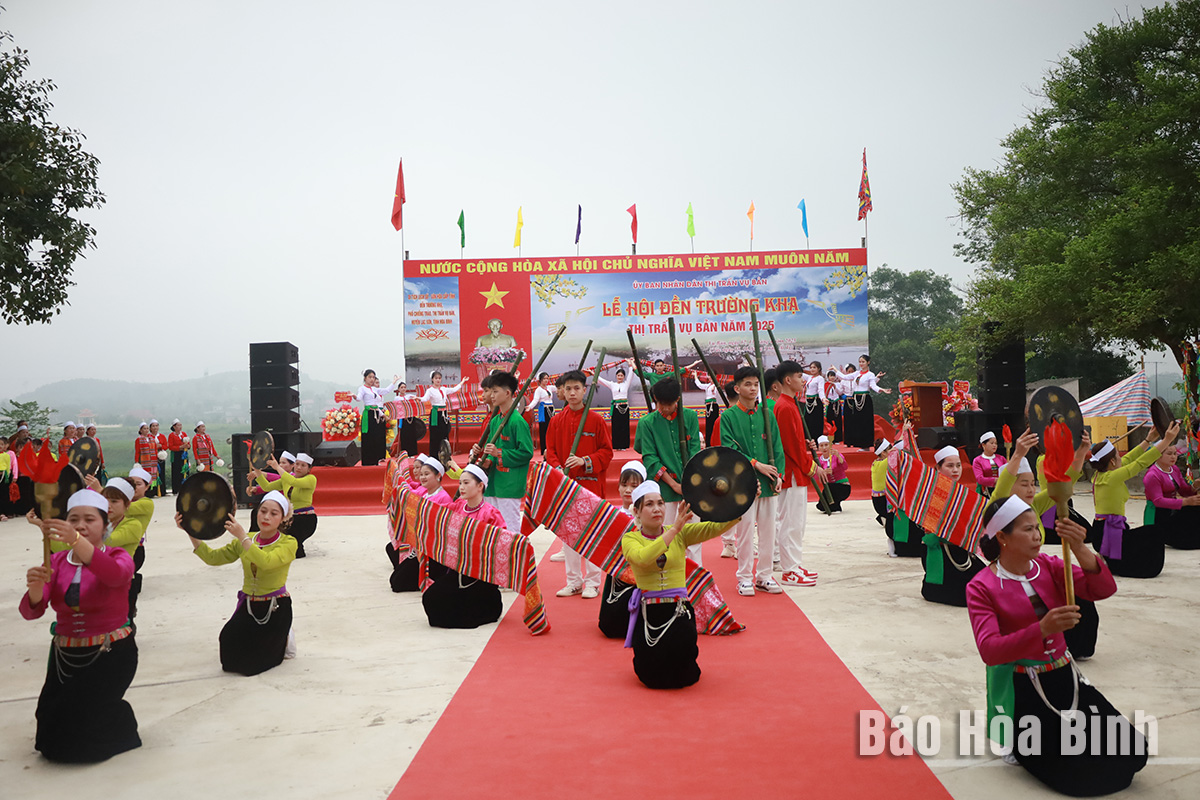
Lac Son district’s Vu ban town held the 2025 Truong Kha temple festival on April 12–13 (the 15th–16th days of the third lunar month). Since its revival in 2019, the festival has been organised every three years, preserving valuable intangible heritage while meeting the community’s cultural and spiritual needs.
The ancient Muong rituals praying for rain and a bountiful harvest, practices handed down through generations and carefully preserved. A vibrant folk art performance rich in traditional festive spirit is held as part of the Truong Kha Temple Festival.
Truong Kha Temple, with deep historical roots, is dedicated to three deities known as Kun Dol, ancestral gods in Muong folklore believed to be patrons of agriculture. They taught the people how to cultivate fields, build irrigation systems, and protect their crops. Revered as village tutelary deities, they are credited with ushering in peace, prosperity, and fruitful seasons for the community.
The festival opened with a ceremonial procession to welcome the three Kun Dol deities, followed by incense offerings from local officials and residents expressing gratitude and reverence. Their prayers echoed a timeless wish for favourable weather, abundant harvests, and communal harmony.
Among the festival’s standout rituals were the rain- and crop-praying ceremonies, oath-taking rites, the blessing of sacred water, fish catching on the Khoang Kha River, a symbolic white buffalo hunt using traditional bamboo blowpipes, and the ritual release of fish into the wild.
The festive atmosphere extended beyond rituals, with a lively array of cultural and sporting events that showcased Muong traditions. Highlights included folk singing, musical performances, traditional costume displays, and friendly competitions in activities like boat racing and volleyball.
With an increasingly vibrant and widespread emulation movement aimed at building cultured residential areas and cultured families, Yen Thuy District has been making steady progress toward improving both the material and spiritual well-being of its people, while fostering a civilized, prosperous, beautiful, and progressive community.
Once lacking recreational spaces and community facilities, Residential Group 2 in Quynh Lam Ward (Hoa Binh City) has recently received attention for the construction of a new, spacious, and fully equipped cultural house. The project followed the model of state support combined with public contributions in both labor and funding.
The "All people unite to build cultural life" movement, which has been effectively integrated with Kim Boi district’s socio-economic development goals, is fostering a lively spirit of emulation across local residential areas, hamlets, villages, public agencies, and enterprises. In addition, through the initiative, traditional cultural values are being preserved and promoted, while community solidarity and mutual support in poverty reduction and economic development are being strengthened.
A working delegation of the Hoa Binh provincial People’s Committee led by its Permanent Vice Chairman Nguyen Van Toan on June 11 inspected the progress of a project to build the Mo Muong Cultural Heritage Conservation Space linked to tourism services in Hop Phong commune, Cao Phong district.
Born and growing in the heroic land of Muong Dong, Dinh Thi Kieu Dung, a resident in Bo town of Kim Boi district, in her childhood was nurtured by the sweet lullabies of her grandmother and mother. These melodies deeply imprinted on her soul, becoming an inseparable part of her love for her ethnic group's culture. For over 20 years, this love for her hometown has driven Dung to research, collect, and pass down the cultural values of the Muong people to future generations.
In the final days of May, the Ethnic Art Troupe of Hoa Binh Province organized performances to serve the people in remote, mountainous, and particularly disadvantaged areas within the province. These were not just ordinary artistic shows, but they were the meaningful journeys aimed at spreading cultural values, enhancing the spiritual life of the people and contributing to the preservation of ethnic minority cultural identities.



